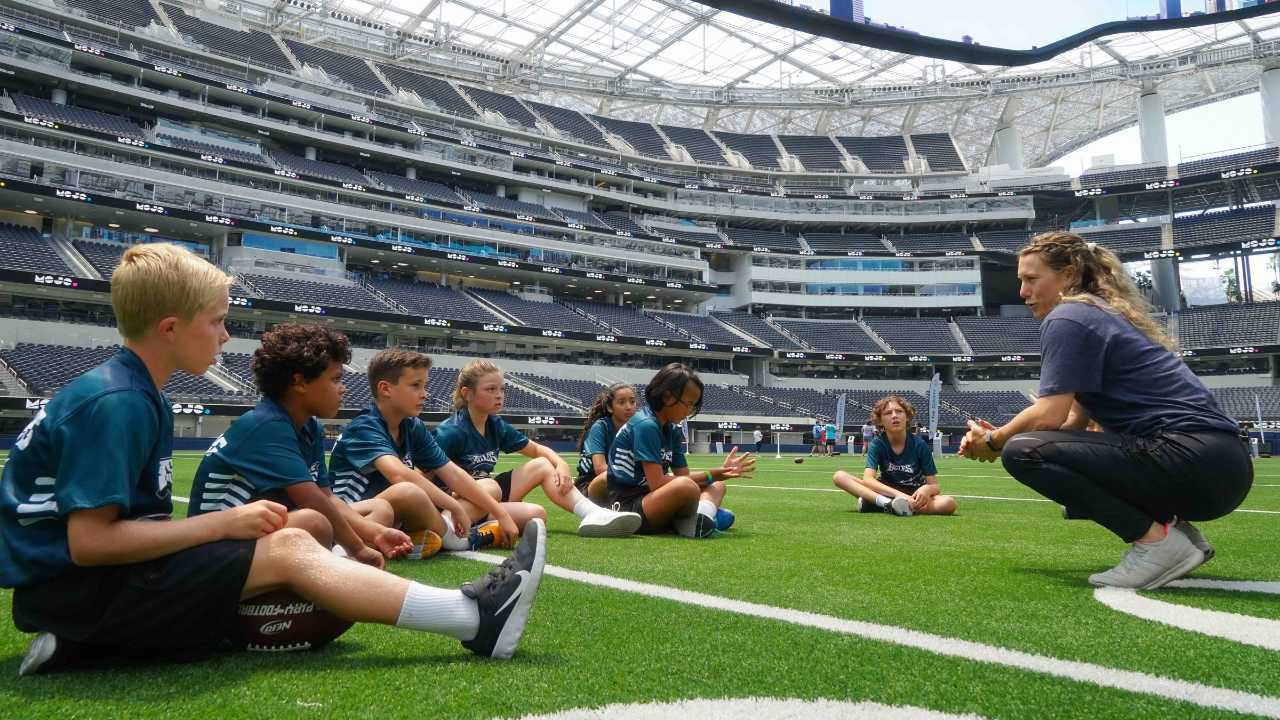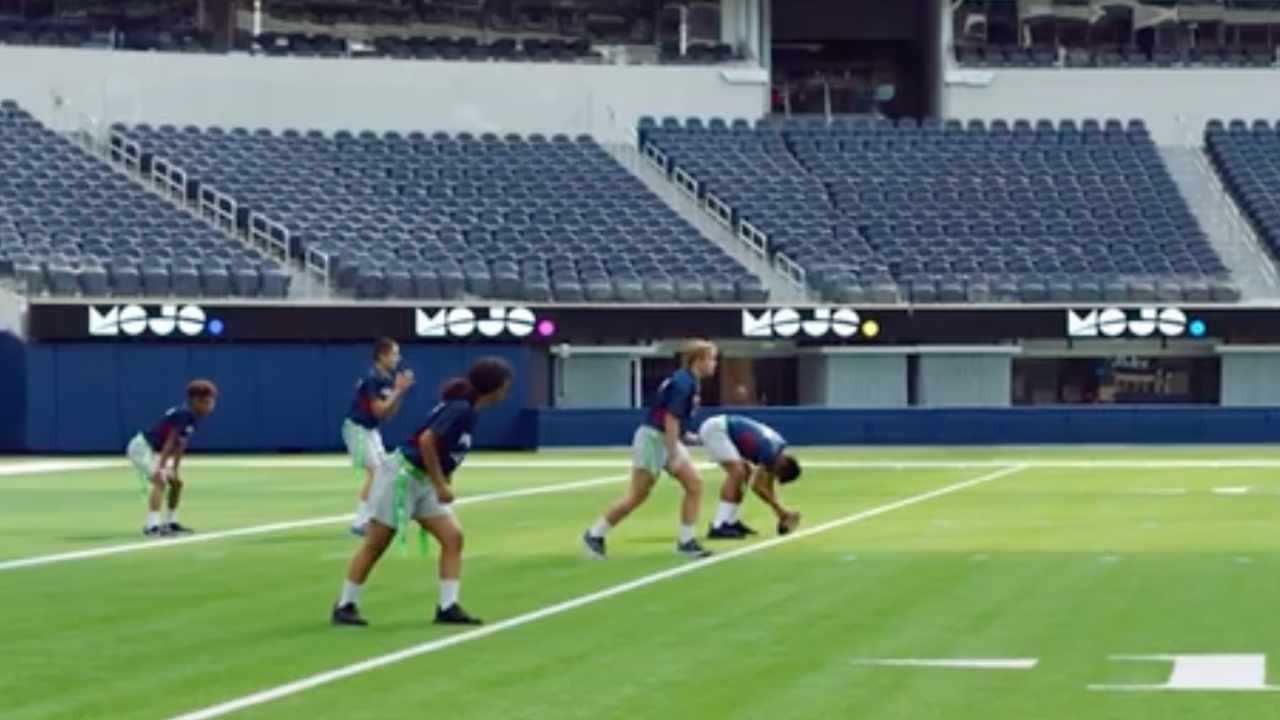What Is Zone Defense?
Protect your patch of turf
Team MOJO
| 3 min read

The job of the defensive team in flag football is simple — stop the offense from advancing or scoring. This can be done by swarming the ball, pulling flags, making interceptions and pressuring the QB. OK, maybe it’s not that simple.
In the zone
In flag football, there are two ways to set up the defense — man defense and zone defense. Unlike man to man defense — where every defensive player guards a specific offensive player — zone defense is about guarding a specific area of the field. If a ball carrier comes into that area — or zone — it’s the defensive player’s job to grab the flag and end the play.
Snagging interceptions is another important part of zone defense. If a receiver enters the zone looking for a big throw from the quarterback, the defensive player should stop that catch or grab it themselves. That’s why, in zone defense, defensive players should drop to the back of their zones with eyes focused mainly on the QB looking for clues as to where the ball is going. Anything going down in the zone is the defender’s responsibility.
Many zone formations include a rusher at the 7-yard mark. That player doesn’t have a zone to cover, but instead rushes toward the quarterback after the snap. The goal: to pull the QB’s flag behind the line of scrimmage for a loss of yards — or at least throw off the pass.
Why it works
Zone defense is a great strategy for younger players, up to 12-14 years old. It can be easier for them than man defense. Since kids grow at different times, a single age group will most likely have kids of different sizes. If a defensive player is matched with an offensive player who is bigger or faster, it’s going to be hard to keep up for an entire play. Man defense is also trickier for younger players because the field is often crowded and it’s easy to lose your assigned player in the chaos. Kids can more easily track what’s happening in the larger zone.
You’ve got options
NFL FLAG describes several defensive formations that will have your team shutting down plays in no time. Coaches can mix and match these zone formations or create versions of their own.
Here are some classics that will guarantee solid defensive coverage:
Cover 2 Defense uses a player as a rusher who also can guard the center, if needed. Two defensive players act as cornerbacks, covering 5 yards back close to each sideline. The other two players are safeties, playing in the back to guard against deep plays.
Cover 3 Defense sets up two defenders 5 yards back from the line of scrimmage. They’re in a good position to stop short-yardage plays that use In, Out and Slant routes. The other three defenders spread out 10 yards back from the line of scrimmage to stop deep plays. This formation provides complete zone coverage of the field.
It’s smart to change up your defense based on what the offensive team is working toward. Cover 4 Defense works great against deep plays when the offense needs last minute yards for a first down or a win. It puts all four defenders 10 yards back, each guarding a quarter of the field. The fifth defender brings on the pressure by rushing the QB.




